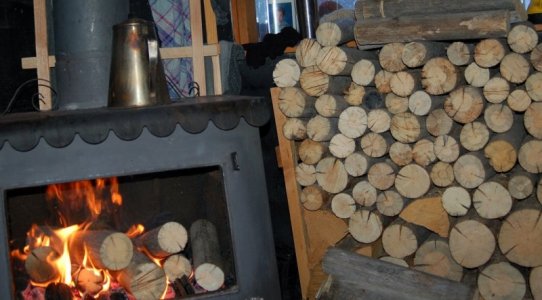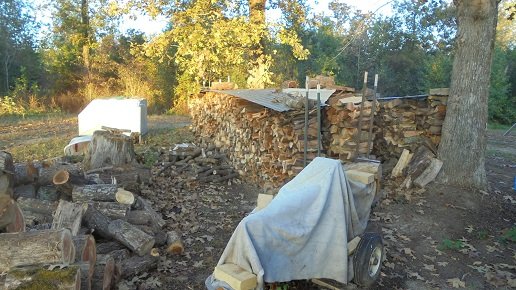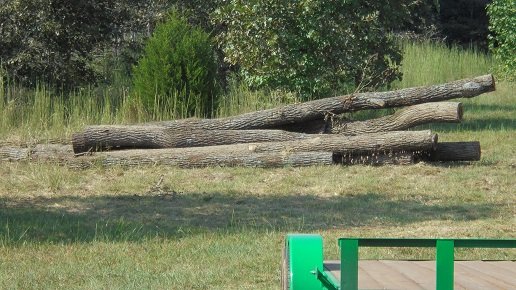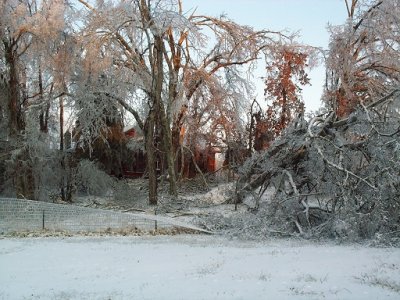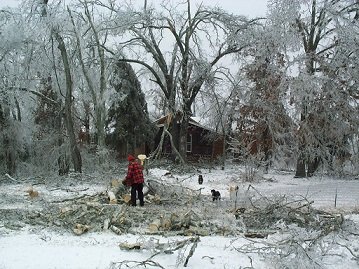Burning Issues is a project of Clean Air Revival, Inc., a non-profit 501 C3 organization dedicated to research and education on clean energy and the detrimental effects of particulate aerosol pollution.
Project Statement: Smoke from residential burning of wood, wood burning restaurants and outdoor burning of wood, crops and debris is permeating our neighborhoods. This burning results in high ground level concentrations of toxic air pollution. Millions of people are becoming ill from these emissions and some are dying. Awareness and education are the key elements to the abatement of this source of deadly fine particulate pollution in our communities. Please take the time to read these informative fact sheets.
Particulate pollution is the most important contaminant in our air. ...we know that when particle levels go up, people die. A number of studies also show changes in inflammatory markers in the blood, which are risk factors for heart attack." Joel Schwartz, Ph.D.,
Harvard School of Public Health, E Magazine, Sept./Oct. 2002
"The largest single source of outdoor fine particles (PM2.5) entering into our homes in many American cities is our neighbor's fireplace or wood stove. ....only a few hours of wood burning in a single home at night can raise fine particle concentrations in dozens of surrounding homes throughout the neighborhood and cause PAH concentrations higher than 2,000 ng/m3." (Dr. Wayne Ott,
Stanford University, Feb. 1, 1998)
1. "... as many as 60,000 U.S. residents per year may die from breathing particulate at or below legally allowed levels." (Joel Schwartz, USEPA as quoted in
Dust to Dust: A Particularly Lethal Legacy, Science News, 139:212, 1991); "Dirty-Air Cities Far Deadlier Than Clean Ones, Study Shows", The New York Times National, 3/10/95 p. A20; "Mammalian lungs don't have defenses against small particles, says Schwartz",
Tiny Particles, Big Dilemma, Business Week, Aug.4, 1997)
2. Worldwide estimate of premature deaths due to wood smoke is 2.7 to 3 million, with respiratory illness being the largest killer of infants.
Health and Environment in Sustainable Development,
World Health Organization, 1997, p.242.
An 86 page research list is available on the web "
An Annotated Bibliography on Acute Respiratory Infections and Indoor Air Pollution with Emphasis on Children Under 5 in Developing Countries", (
J.P. McCracken & K.R. Smith, done for the Environmental Health Project, USAID, December 1997.) Copies are available on the EHP web site at:
http://www.crosslink.net/~ehp/aribib2.htm or contact Dan Campbell, EHP, at email,
campbelldb@cdm.com to request a printed copy.
3. "The risk of premature death is 17% higher in cities with high fine particulate levels when compared with cities with cleaner air." (Dockery, et al,
American Journal of Respiratory and Critical Care Medicine, March 1995)
4. The elderly, newborns, children, adults who exercise rigorously and those with existing heart and lung disease are most at risk for premature death due to particle pollution exposure.
(American Lung Association, "The Perils of Particulates", 1-800-LUNG-USA)
5. For every increase in the level of particle air pollution there is a measurable increase in chronic respiratory illness. On an average it is 6% increase in mortality and an 18 1/2% increase in respiratory hospital emissions for every 50 µg/m3. (Joel Schwartz,
Harvard School of Public Health, Particulate Air Pollution and Chronic Respiratory Disease, Environmental Research 62, 7-13, 1993)
6. In localities where wood is the predominant house heating fuel, wood stoves have been shown to contribute as much as 80% of the ambient PM10 (fine particle) concentrations during winter months. This study shows that the new technology stoves do not achieve the emission reduction expected. Some models were experiencing degraded emission control performance after only a few months use. "the relatively poor showing of the control technologies was very disappointing." (
In-House Performance of New Technology Wood stoves, EPA/600/D-90/026, Robert C. McCrillis, EPA/600/D-90/026)
7. In some neighborhoods, on some days, 90% of the particle pollution is from residential burning. (Jane Koenig and Timothy Larson,
A Summary of Emissions Characterization and Non-cancer Respiratory Effects of Wood Smoke, USEPA DOC #453/R-93-036, 1-919-541-0888)
8. a) Children's health studies document that living in homes where wood is burned, and in communities where wood smoke is prevalent, the wood smoke smoke causes decreases in lung capacity and increases in asthma attacks, frequency and severity of general respiratory illness, emergency room visits and school absences. b.) Wood burning releases many air pollutants, some of these are: chlorinated Dioxin, carbon monoxide, methane, volatile organic compounds (VOCs), nitrogen oxides
, polycyclic aromatic hydrocarbons (PAH), and fine particulate matter (PM10, PM2.5). ("
A Summary of Emissions Characterizations and Non-Cancer Respiratory Effects of Wood Smoke", Anuszewski, , Larson, , and Koenig, (1992); "
Simultaneous Indoor and Outdoor Particle Light Scattering Measurements at Nine Homes Using a Portable Nephelometer"
University of Washington, Dept. of Civil Engineering and Dept. of Environmental Health)
9. Lab rats exposed to 750ug/m3 wood smoke concentration experienced an immediate 25% reduction in pulmonary bacterial clearance. Certain lung functions were reduced by 23% and 61% after 1.5 and 2.5 hours respectively. Researchers concluded that wood smoke compromises important pulmonary immune defense mechanisms and suggests an association between wood smoke and increased incidence of respiratory infection. (Zelikoff, J.T.,
N.Y. Univ. Med. Center, Instit. of Env. Med, CIAR Currents, Nov. 1994)
10. 50% of the polynuclear organic material (POM)in our air is from residential burning. POMs contain the subgroup PAH. PAHs include benzo(a) pyrene and other known carcinogenic compounds.(
In-House Performance of New Technology Wood Stoves,
EPA/600/D-90/026)
11. California: Data from a fixed site in a residential neighborhood of the San Francisco Bay Area shows that particulate concentrations increase most rapidly in the early evening and that the highest concentrations occur in the late evening, after 11 PM. (
Real Time Monitoring of Air Borne Particulates",
Mary J. Rozenberg, Inhalation Toxicology, (7(5), 1995 ).
12. California:In middle class suburban California neighborhood indoor and outdoor PAH levels coincided with residential wood stove and fireplace use in the evenings of the heating season. Indoor levels averaged 60% of outdoor levels.
Indoor-Outdoor PAH Time Series from the Residential Exposure Project, Technical Progress Report #1, Development of and Advanced Total Human Exposure Model, EPA Innovative Research Program, Nov. 1995, Wayne Ott, Ph.D; Neil Kleipus.
13. The US EPA warns that exposure to a fraction of a nanogram of PAH increases our risk of developing cancer. (
Wood Burning Fireplaces: Romance or Risk,
BioScience Vol. 32 No 2, February, 1982)
14. Wood smoke contains over 200 chemicals and compound groups. The emissions are almost entirely in the inhalable size range. This paper is a must read. (
Environmental Impact of Residential Wood Combustion Emissions and Its Implications, John A. Cooper, APCA Journal, Vol.30 No.8, August 1980); Air borne wood dust (uncombusted) can cause respiratory, eye and skin irritation. Breathing excessive amounts of wood dust has been associated with nasal cancer in some industries. T
he international agency for research of cancer (LARC) classified all wood dust as a human carcinogen Group 1.
15.(a) Wood smoke particle analysis show particle range between 0.15 and .4 microns, with essentially none greater than one micron, (Koenig, et al, 1993); (b) Burning Issues shows a photograph of wood particles taken from a woman's diseased lung on our website. Note the tissue piercing shape of the coated and uncoated wood fibers, (Interstitial Lung Disease and Domestic Wood Burning, Ramage, Roggli, Bell, and Piantadosi, 1987); (c ) The smoke pollution particles are so small that they filter into our homes even with all the doors and windows closed. The level of indoor air pollution is typically equal to 70% of the outdoor pollution level. (
The Health Effects of Wood Smoke,
Washington State Department of Ecology)
16. (a)The EPA estimates that the lifetime cancer risk from wood stove smoke is twelve times greater than that from an equal volume of second hand tobacco smoke. (
The Health Effects of Wood Smoke, Washington State Department of Ecology); (b)"Burning two cords of wood produces the same amount of mutagenic particles as: Driving 13 gasoline powered cars 10,000 miles each at 20 miles/gallon or driving 2 diesel powered cars 10,000 miles each @ 30 miles/gallon. These figures indicate that the worst contribution that an individual is likely to make to the mutagenicity of the air is using a wood stove for heating, follower by driving a diesel car. (
Dr. Joellen Lewtas, Contribution of Source Emissions of the Mutagenicity of Ambient Urban Air Particles, U.S. EPA, #91-131.6, 1991)
17. Free radicals produced from wood smoke are chemically active for twenty minutes, tobacco smoke free radicals are chemically active for thirty seconds. Wood smoke free radicals may attack our bodies cells up to forty times longer once inhaled. (Lachocki, Pryor, et al,
Persistent Free Radicals in Wood smoke,
Louisiana State University, Free Radical Biology & Medicine Vol.12, 1992)
18
. Dioxin:Wood burning is the second largest source of dioxin in the San Francisco Bay Area. (LLL, 2001) Wood burning is the third largest source of dioxin in the United States. (EPA 1994, Loretta Ucelli spokeswoman, Washington Post)
19. The San Francisco Bay Area alone could enjoy $2 billion a year in health benefits, avoid thousands of serious illnesses and save 400 lives a year if the air quality regulators would focus on reducing particle air pollution (Jane Hall, Environmental Scientist, California State University at Fullerton,
Air Quality Regulators Pick Wrong Target, S.F. Chronicle, 9/26/94) (David Fairley of the Bay Area Air Quality Management District estimates that more than $1 billion of medical illness expense in the Bay area is from wood smoke pollution. One wood fire can cost as much as $40. of medical damage to neighbors.
The BAAQMD e
20. "Simply banning or limiting wood fires could potentially save many lives at little or no cost."(David Fairley, Bay Area Air Quality Management District, De Mandel, R., Rothenberg, M., and Perardi, T. (1992), Results From the 1991-92 Pilot Study of Wintertime PM10 in the San Francisco Bay Area,
BAAQMD, TM 92002)
21. Animal toxicology studies show that wood smoke exposure can disrupt cellular membranes, depress macrophage activity, destroy ciliated and secretory respiratory epithelial cells and cause aberrations in biochemical enzyme levels." (3)
A Summary Of Emissions Characterization And Noncancer Respiratory Effects Of Wood Smoke, Timothy V. Larson and Jane Q. Koenig, U.S.EPA-453/R-93-036, Dec. 1993)
22. A medical evaluation of Mexican women who regularly cook over open wood fires revealed ravaged lungs and Pulmonary Arterial Hypertension, more severe than tobacco-related Chronic Obstructed Pulmonary Disease. (
Pulmonary Arterial Hypertension and Cor Pulmonale Associated with Chronic Domestic Wood smoke Inhalation, Julio Sandoval, M.D., etal., Chest 1993;103

p12-20.)
23. Wood stoves linked to mouth cancer. Thursday January 21 8:07 PM ET NEW YORK, Jan 21 (Reuters Health) -- Wood burning stoves appear to increase the risk of cancers of the mouth and throat, a study suggests. People exposed to the smoke from such stoves have 2 to 3 times the risk of cancers of the mouth and throat, and the wood stoves may be responsible for 30% of all such cancers, according to the study conducted of 2,352 people living in Southern Brazil. ``Cooking and heating stoves are used in more than half the world's households and have been shown in many locations to produce high indoor concentrations of particulates, carbon monoxide and other combustion-related pollutants,'' reported Dr. Eduardo Franco, of McGill University, Montreal, Canada, and colleagues in the International Journal of Epidemiology. ``Wood and coal fires generate a number of combustion products which are known, or suspected carcinogenic agents.'' Franco, along with Brazilian colleagues, compared 784 patients with mouth and throat cancers to 1,568 people without cancer. Of the cancer patients, about 48% had mouth cancer, 27% had pharyngeal cancer and 25% had laryngeal cancer. After taking into account tobacco and alcohol consumption, which increase the risk of such cancers, particularly when consumed together, the researchers found that the use of a wood stove was still linked to increased cancer risk. The women in the study appeared to be at greater risk for the cancer, particularly cancer of the larynx. ``This finding is probably related to the fact that women are more exposed to emissions from wood stoves,'' the authors note. ``
Analogous results were found in China, where women exposed to emissions from cooking stoves were at higher risk of developing lung cancer than men.''(International Journal of Epidemiology 1998; 27:936-940)
24. England began to mandate clean fuel use following the UK Clean Air Act of 1956, first in London, then in towns of designated populations with a smoke control order. This was a result of the deaths of 4,000 people during the infamous London Smog air pollution episode of December 1952. Solid fuel combustion was a significant contributing factor. This one page ordinance has stood for over fifty years. (
Clean Air Legislation in the UK. On Her Majesty's Service, Dept. of the Environment)
25. "I saw very strong and significant associations between tonsillitis, frequent cough, pseudo-croup, exercise induced wheeze, food allergies and Wood smoke exposure in our school children. I think that Wood smoke is one of the most harmful air pollutants we have on earth." (Gerd Oberfeld, M.D., Epidemiologist, Public health office - Unit for Environmental Health,
Salzburg, Austria. International Study of Asthma and Allergies in Childhood,
(ISAAC) Salzburg 1997.)
26. "The largest single source of outdoor fine particles (PM2.5) entering into our homes in many American cities is our neighbor's fireplace or wood stove. Despite the ineffectiveness of a fireplace in heating a home, only a few hours of wood burning in a single home at night can raise fine particle concentrations in dozens of surrounding homes throughout the neighborhood and cause PAH concentrations higher than 2,000 ng/m3. The far reaching implications of these scientific discoveries for environmental laws have not yet sunk in the Nation's consciousness. The best way to reduce the exposures of our children and families to toxic pollutants that cause cancer, asthma, or other diseases is by taking very simple steps in our daily lives, not relying on billion-dollar "remediations" or complex laws controlling industrial point source emissions. Indeed, ignoring indoor air pollution and human exposure as the nation is doing under its current environmental laws, is a tragic disregard of our children's health and the well-being of future generations." ( Dr. Wayne Ott, Statistics,
Stanford University, 2/1/98)
27. Smoke is smoke: Smoke from the burning of the straw residues from Kentucky grass seed fields contains at least two different types of organic compounds, i.e. the phenolic compounds and the PAHs. The phenols appear to be present in much higher concentrations than the PAHs. In the short-term, inhalation of this smoke, from MSDS toxicity data, would appear that these relatively volatile phenolic compounds are likely to cause acute irritation of the mucous membranes of the lungs as well as eye and skin irritation. Further, the long-term carcinogenic effects due to exposure to the PAHs could be expected. CHEMICAL ANALYSIS OF GRASS SEED FIELD STRAW,
Jeffrey A. Corkill, Ph. D., Department of Chemistry & Biochemistry, Eastern Washington University (1996)
